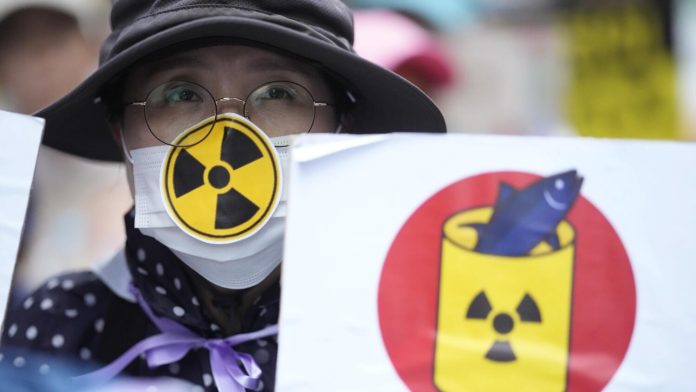South Koreans Rally Against Japan’s Fukushima Wastewater Discharge Amid concerns over Japan’s impending release of treated nuclear wastewater from the tsunami-damaged Fukushima nuclear power plant, hundreds of South Koreans took to the streets of their capital on Saturday.
Protesters demanded that Tokyo abandon its disposal plans, expressing frustration with Seoul for endorsing the discharge despite perceived food safety risks.
This rally marked another instance in a series of protests that have unfolded over the past weeks since the International Atomic Energy Agency (IAEA) approved Japan’s discharge plans in July.
The IAEA claimed the process would adhere to international safety standards and have minimal environmental and health impacts.
South Korean President Yoon Suk Yeol’s government has also supported the safety of the wastewater release, aiming to mend strained relations with the United States ally and address concerns posed by North Korean nuclear threats.
Japan has announced the wastewater release would begin in the summer, but an exact date remains unconfirmed.
Wearing raincoats and carrying signs opposing the disposal of Fukushima’s contaminated water, demonstrators marched through downtown Seoul in light rain.
The rallies remained peaceful, with no immediate reports of clashes or injuries. South Korea has been striving to alleviate concerns about food contamination and environmental risks tied to Fukushima’s wastewater release.
This includes conducting expanded radiation tests on seafood and even examining sand from various beaches.
According to Jeon Jae-woo, an official at the Ministry of Oceans and Fisheries, none of these tests have raised safety concerns so far.
The issue of Fukushima’s wastewater has been sensitive for years between the US allies. Recent efforts have aimed at improving strained relations, addressing shared concerns related to North Korea and China.
In 2011, an earthquake and tsunami led to the destruction of Fukushima’s cooling systems, resulting in the melting of three reactors and contamination of their cooling water.
Japan first announced plans to discharge treated water into the sea in 2018, detailing a meticulous process of dilution with seawater over decades.



